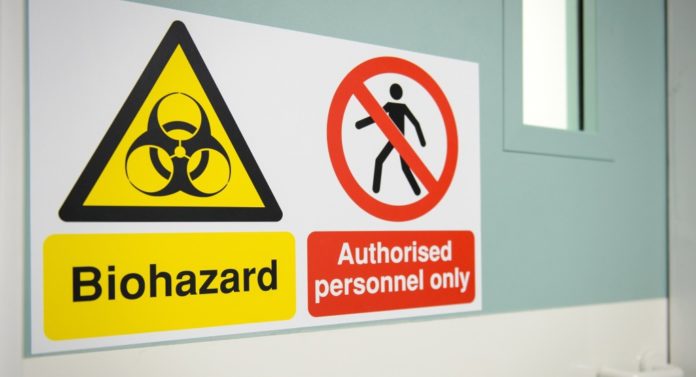
A mistake at a CDC biocontainment lab may have exposed one technician, and possibly more, to the Ebola virus, although the risk of contracting the deadly disease is low, federal health officials said late Wednesday.
The potential exposure took place Monday after a sample of material that may have contained the virus was accidentally moved from a high-level containment lab to a lower-level lab this week at the Centers for Disease Control and Prevention in Atlanta, NPR reported, citing a statement from the agency.
According to the Washington Post, only one lab technician at the second lab worked with the errant sample, but other staff had contact with the laboratory room where it was processed.
The mistake was discovered Tuesday, when lab technicians opened the freezer and saw material that should have been sent off for analysis already. It was then that “they realized the samples had been switched,” the Post reported. By that point, however, the sample had been destroyed and the lab decontaminated in routine procedures.
CDC Director Dr. Tom Frieden said he is “troubled by this incident” inside the agency’s Ebola lab. He ordered an inspection into the missteps that led to the breach. “I have directed that there be a full review of every aspect of the incident and that CDC take all necessary measures,” Dr. Frieden said.
Officials described the risk related to the incident as low and said potential exposures did not extend beyond the lab.
Ebola can be contracted only through direct contact with the virus, most often through the blood or excretions of infected people.
The virus isn’t carried in the air and probably isn’t easily transmitted from objects a sick person may have touched, either. Infection is also possible by accidental sticks with hypodermic needles contaminated with the virus, although that appears not to be a possibility in this case.
Still, CDC officials said staff members’ health would be monitored for 21 days, the incubation period for Ebola.
This week’s accident marks the second problem at CDC this year involving a highly infectious agent and agency personnel.
In June, more than 80 employees at a CDC laboratory were exposed to airborne anthrax bacteria in an embarrassing blunder. In that case, the agency’s Bioterror Rapid Response units had been preparing an especially dangerous strain of the bacteria for use in two lower-security CDC labs.
Bioterror technicians erroneously thought the bacteria had been inactivated, making it safe to handle. But a week later, workers noticed a lab dish containing live, growing anthrax, and they realized they had sent similar samples to labs that were not taking the precautions needed to protect people against infection.
And still another mistake involving a possibly lethal virus and federal scientists emerged in July. That month, the Food and Drug Administration said that six vials of potentially deadly smallpox virus were discovered in an unused corner of a storage room at a National Institutes of Health laboratory in Maryland.
CDC tightened lab procedures after the anthrax incident and a second mishap involving avian influenza virus.
The latest CDC breach occurred at the agency’s Ebola lab, a biosafety level 4 facility. BSL-4 is the highest rating for labs that deal with infectious agents. The CDC said the sample was inadvertently moved to a BSL-2 lab on the same campus. BSL-2 labs have less stringent safety procedures.
Speaking to the Washington Post, CDC officials said two experienced technicians made mistakes. “One technician mistakenly put samples of material that could have contained live Ebola virus into the equivalent of the lab’s out basket, for transfer to the second lab, a BSL-2 lab. That material should have remained and been stored in a freezer,” the Post reported.
“The second mistake came on the receiving end: The technician in the BSL-2 lab should have recognized, via the color coding on the test tubes, that this was material that should have stayed at Level 4. That second technician is the person who could have exposed, and is now in the 21-day monitoring period,” the article said.
CDC director Frieden emphasized that his lab technicians follow extreme safety protocols but said a single, stray incident warrants further scrutiny.
“Thousands of laboratory scientists in more than 150 labs throughout CDC have taken extraordinary steps in recent months to improve safety,” Frieden said. “No risk to staff is acceptable, and our efforts to improve lab safety are essential — the safety of our employees is our highest priority.”
